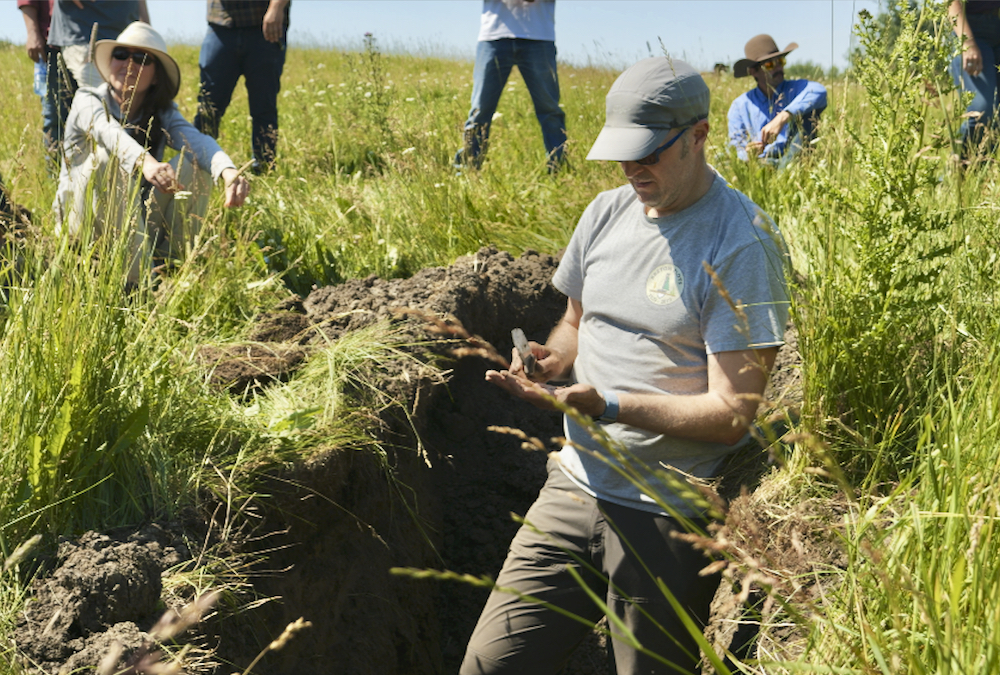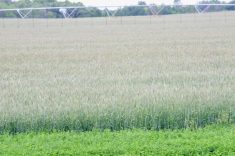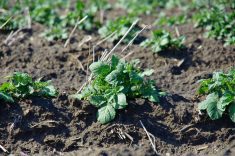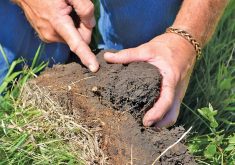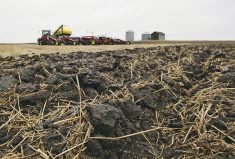There’s no easy way to know whether management practices are putting carbon back into the soil, or how much.
But Alberta producers may soon have an app that measures soil carbon, shows what management practices work best in their area, and allows them to trade carbon credits with high emitters.
“Theoretically the app would help to inform the farmer about what management practices will get the most carbon credits,” said lead researcher Derek MacKenzie, an associate professor in the University of Alberta’s ag department.
Read Also
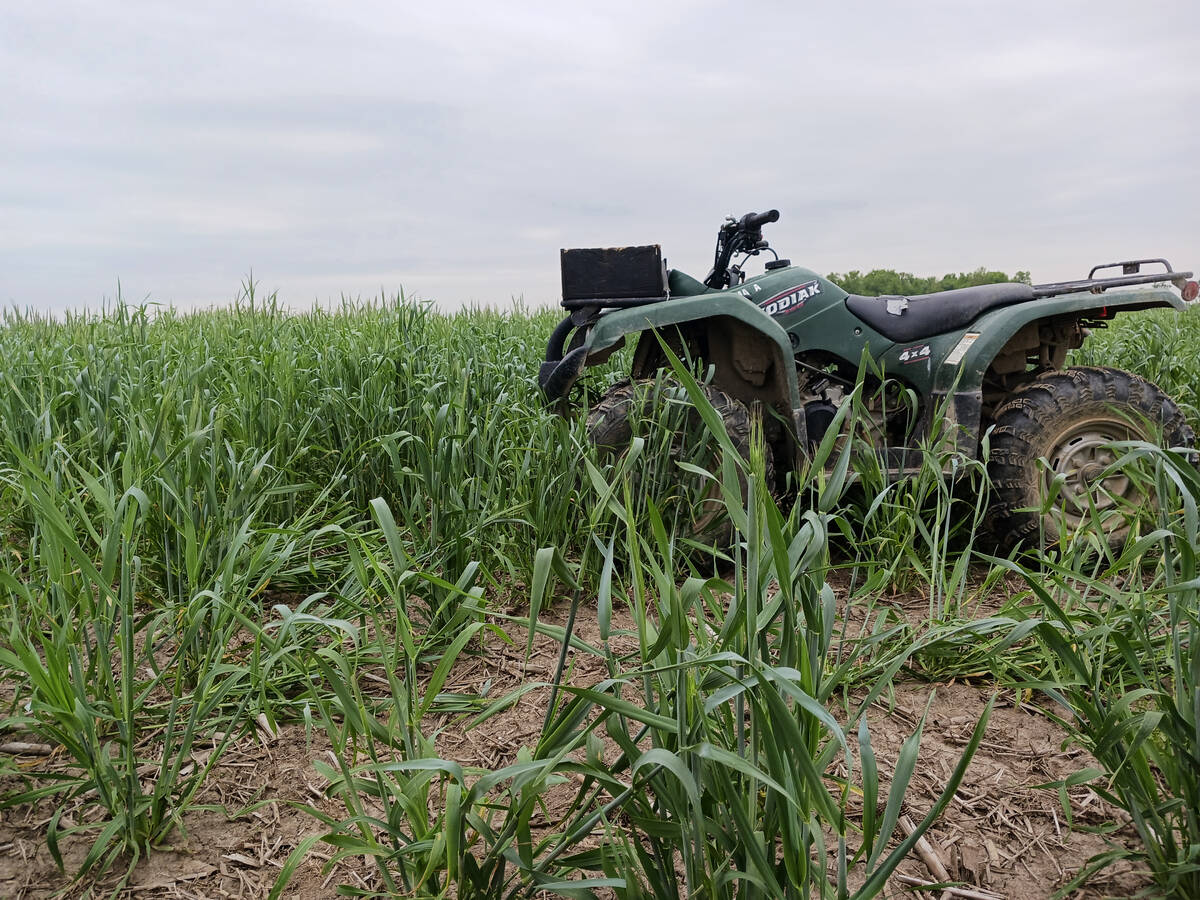
The fickleness of nitrogen
Nitrogen is one of the most challenging nutrients to manage in corn production, in part because of how it responds to environmental conditions.
“The app could come back and tell him, ‘If you use this much compost on this land and maybe this much synthetic fertilizer, you should sequester this much carbon.’”
Developers of the app also want it to have a carbon credit trading portal.
“We’re trying to develop a carbon economy in the province,” said MacKenzie. “In an ideal world the app will come back and say ‘if you do these practices, you will sequester this much carbon, which has a value of this much money in the market today’.”
Maximizing soil health is a big motivator behind the project.
Although the province is home to an abundance of healthy, fertile soil, the key is to keep it that way — preferably by using less synthetic fertilizer, said the soil scientist. By crowdsourcing successful management practices on the app, farmers will essentially be teaching each other how to do that.
“The literature quite clearly shows that if you hammer agricultural soils for hundreds of years with synthetic fertilizers, you decrease the soil health, you lose fertility, you lose function. But we gave up tillage in the ‘90s, so if we can move away from synthetics we will probably be doing good.”
The app could also potentially be used to measure fertility. Anchoring it will be a centralized soil database collating big data — including soil health attributes — from all over the province. This journey started when MacKenzie found out about a soil sampling campaign that took place from 1997 to 2007.
“They looked at soil quality parameters at 42 benchmark sites and archived soil samples from across the province. There’s about 4,000 500-millilitre jars of soil from this collection period,” he said.
“That really caught my interest because you can still derive a lot of data from archived soils.”
With funding from Research Driven Agricultural Research (RDAR) and Alberta Innovates, MacKenzie and his team re-sampled these sites to see how their health and quality have evolved.
Soil and data scientists are working together to interpret the results, investigating such soil health parameters as stability, carbon sequestration potential and organic diversity (for example, the presence of helpful microbes). MacKenzie hopes to see climate projection data added to the mix of parameters as well.
Neighbours helping neighbours
MacKenzie wants to include a farm data capture portal that would allow farmers to share the results of their soil tests if they wish. It would be uploaded into regional data collections and searchable by postal code, not by the producer’s name or specific farm location.
“Their neighbours will be able to learn anonymously through the database what practices are sequestering the most amount of carbon (in their area),” he said. “It will sort of be neighbours helping neighbours to use the most effective and sustainable agricultural management practices available at the time.”
But since farmers pay for this soil test data and own it, they will need encouragement to share it.
“I think the incentive is going to be that the more data we can generate, the more knowledge we will have about practices that sequester carbon and may be translated into carbon credits,” said MacKenzie.
“Or it may help producers apply for government funding to show that their nitrogen management practices are reducing emissions, that they’re using less nitrogen and storing more carbon.”
The goal is to begin beta testing of the app by December 2024. This is where producers will start to play a role — and the more the merrier.
“I’m trying to put the word out that if producers want to be involved in beta testing, they can email me and eventually I will get them an email newsletter to give them updates about this,” said MacKenzie, who can be reached at [email protected].
Work similar to this is taking place all over Canada and the world, he added.
“In Canada, there’s basically different satellite labs in every single province across the country working on this kind of information. We’re trying to develop some high-level leadership to help coordinate those efforts so that … we’re all working together.”
There’s a worldwide need to create a big database of soil information, just “like what’s been done in health, medicine and pharmacy,” he said.
“It comes from a need to better inform management practices that may affect soil health and quality, and it may also help us mitigate climate change given that soil has the ability to sequester and store large amounts of carbon.”


